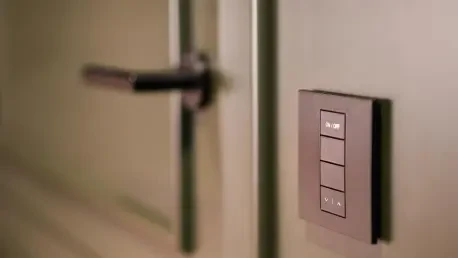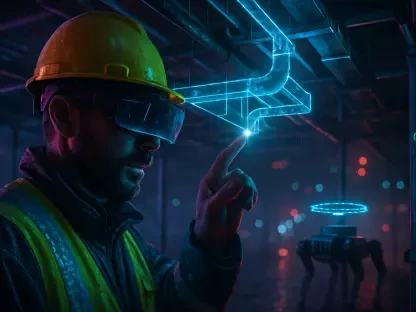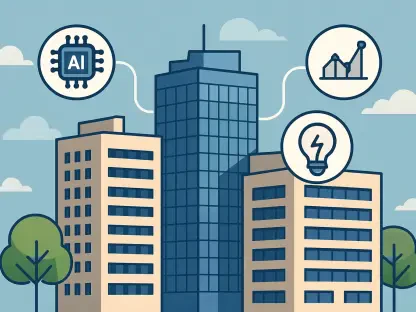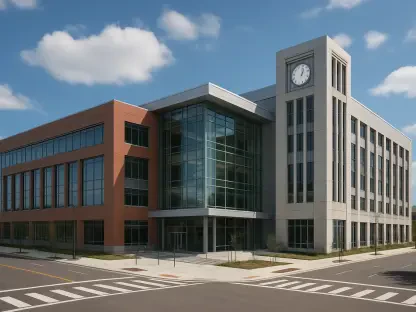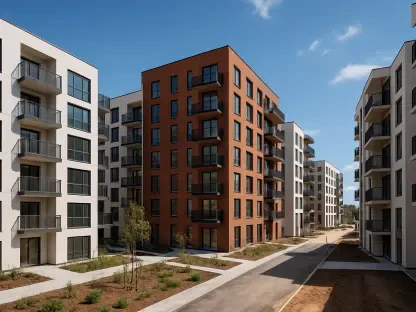As modern architecture evolves, the integration of automation in doors and windows increasingly emerges as a transformative force, reshaping the very essence of buildings. This shift toward intelligent systems is driven by a market with immense growth potential. The Door and Window Automation Market, with its robust trajectory, is projected to achieve an impressive valuation of USD 32.4 billion by 2032, up from USD 17.4 billion in 2023. The transformation reflects a formidable compound annual growth rate of 7.15%, underscoring not only the widespread adoption but also the heightened importance of automation in residential and commercial sectors. This evolution is rooted in the increasing demand for intelligent and contactless solutions that offer heightened security and convenience, fueled by rapid technological advancements and a shift in consumer expectations.
With the proliferation of smart technologies, automation systems in doors and windows are no longer futuristic concepts but integral elements of modern life. As they become indispensable, they redefine how homes, offices, and public spaces operate, blending seamlessly with human-centric design philosophies that prioritize efficiency, security, and sustainability. This convergence of technology and architecture is not merely a trend but a paradigm shift illustrating how urban landscapes adapt to contemporary challenges. The adoption of motion sensors, AI, and the Internet of Things (IoT) within these systems offers greater control and customization, leading to operational efficiency and enhanced environmental performance, marking a new frontier in sustainable building practices.
The Intersection of Smart Infrastructure and Automation
Automation technologies have found a significant place in the development of smart infrastructure, spanning various building sectors such as commercial, industrial, and residential. This trend is driven by advancements in technology that enable more seamless integration of systems, enhancing convenience and safety. Key to this integration are cutting-edge technologies like motion sensors, artificial intelligence (AI), and the Internet of Things (IoT), which collectively enable automated doors and windows to function optimally and autonomously. These systems are increasingly integral to building management systems (BMS), which allow centralized control and optimization for whole structures. This centralized control not only simplifies management but also contributes markedly to energy efficiency, a strategic focus in the design and management of buildings as they transition to smarter, greener solutions.
The role of automated doors and windows extends far beyond simple functionality; their design is increasingly seen as crucial in the quest for energy efficiency and environmental sustainability. As these systems adapt according to weather conditions and usage patterns, they offer an innovative solution for reducing HVAC loads, thereby decreasing energy consumption significantly. This energy optimization is particularly vital in sectors with high energy demands, such as airports, hospitals, and office buildings, where efficiency gains can translate into substantial cost savings. Furthermore, the industry recognizes a post-pandemic surge in demand for contactless technologies to support cleanliness and hygiene, signifying a pivotal shift in public and private spaces.
Evolution of Residential Markets
In residential settings, the automation of doors and windows extends into a realm where personal comfort and security align with modern technological expectations. The increasing popularity of smart home devices illustrates this industry evolution, as homeowners now look to systems such as smart curtains, blinds, and window controls that respond to environmental changes and optimize air quality. Such systems not only offer unmatched convenience but also promise improved safety. Homeowners now expect these automated systems to integrate seamlessly with their smartphones, providing remote control over features such as automated locking and opening, thus fortifying home security. The alignment of these solutions with energy efficiency goals meets the contemporary consumer demand for systems that enhance livability while being sustainable.
The integration of such advanced systems in home environments reflects a broader societal shift toward intelligent living. This technology’s ability to facilitate a well-optimized home environment aligns with growing cultural and economic trends prioritizing smart, sustainable, and cost-effective living spaces. Moreover, by optimizing natural light and ventilation, these systems reduce dependence on artificial sources of lighting and air conditioning, enhancing home energy efficiency while contributing positively to environmental goals. As the residential market continues to welcome these innovations, it becomes clear that systems providing comprehensive solutions for comfort and security can lead its future.
Influence of Government Policies and Urbanization
Government involvement is pivotal in supporting the market for door and window automation, particularly in initiatives aimed at fostering smart city developments and promoting energy-efficient buildings. Favorable policies offering subsidies and regulatory standards have catalyzed the integration of automation technologies, especially in regions such as Europe and Asia-Pacific. Urbanization in these areas further propels market growth, as the demand for automation becomes central to new construction projects. Countries like India, China, and Japan lead these developments, rapidly adopting automated technologies within the infrastructure for both residential and public purposes.
Urbanization’s impact is profound, not just in industrialized regions but worldwide, influencing construction trends and driving the need for innovative solutions. As urban centers expand, there’s an accelerated push toward incorporating smart technologies in building designs, making urban areas more livable and efficient. This transformation is supported by robust government frameworks, which provide the necessary guidance and incentives to embrace these advanced, automated solutions. The ongoing expansion in automated building technologies highlights a commitment to creating urban areas that are technologically advanced, energy-efficient, and sustainable.
Role of Key Industry Players
Crucial to the technological advancements within the Door and Window Automation Market are the efforts of leading companies committed to innovation and quality. Firms like Assa Abloy, Honeywell International Inc., Siemens AG, Dormakaba Group, and GEZE GmbH are front-runners in this space, continuously investing in research and development to push boundaries. Their contributions in developing cloud-connected platforms and AI-integrated systems are significant, setting new industry standards for efficiency, capability, and customer satisfaction. These companies strive to provide solutions that offer real-time control and diagnostic capabilities, shaping a future where buildings are not only smart but also adaptive to the ever-changing technological landscape.
The emphasis on scalability and real-time efficiency in these advancements highlights the strategic focus of industry leaders. These companies aim to deliver solutions that not only meet the current demands of the market but anticipate future trends. In doing so, they lead in offering comprehensive products that bridge the gap between existing technologies and emerging innovations. As investments in intelligent building solutions continue to rise, these firms are positioned to influence the market’s direction profoundly, contributing to the widespread adoption of automated doors and windows as standard components in modern construction.
Market Variances Across Regions
Diverse regional trends influence the Door and Window Automation Market, with regions like North America and Europe currently leading due to substantial investments in smart building practices. These areas benefit from stringent energy policies and a mature commercial real estate sector, fostering the widespread adoption of automation technologies. In contrast, the Asia-Pacific region stands out as a rapidly growing market, driven by swift urbanization, substantial real estate development, and rising consumer awareness. This growth trajectory indicates a fertile landscape for increased integration of automation technologies, especially in new construction projects, positioning the region as a major player in the global market.
Emerging regions such as Latin America and the Middle East are also making strategic moves to adapt to global trends in automation by enhancing their commercial real estate sectors. These areas focus on modernization efforts to bolster sectors such as tourism and healthcare, recognizing the role automation plays in enhancing operational efficiency and overall appeal. By investing in automation technologies, these regions aim to align with international standards and capture new opportunities within the evolving global framework.
The Outlook for Door and Window Automation
As modern architecture advances, the integration of door and window automation is transforming the essence of buildings. The shift to smart systems is driven by a lucrative market, expected to grow from USD 17.4 billion in 2023 to USD 32.4 billion by 2032, reflecting a compound annual growth rate of 7.15%. This growth signifies widespread adoption and the increasing relevance of automation in both residential and commercial environments. The evolution stems from rising demand for intelligent contactless solutions, offering enhanced security and convenience, spurred by rapid tech advancements and shifting consumer expectations.
With the rise of smart tech, automated doors and windows have transitioned from futuristic ideas to essential components of everyday life. As they become vital, they redefine operations in homes, offices, and public spaces, aligning with design philosophies that emphasize efficiency, safety, and sustainability. The incorporation of features like motion sensors, AI, and IoT provides more control and customization, boosting operational efficiency and environmental performance, marking new frontiers in sustainable architectural practices.
